Project Category: Mechanical
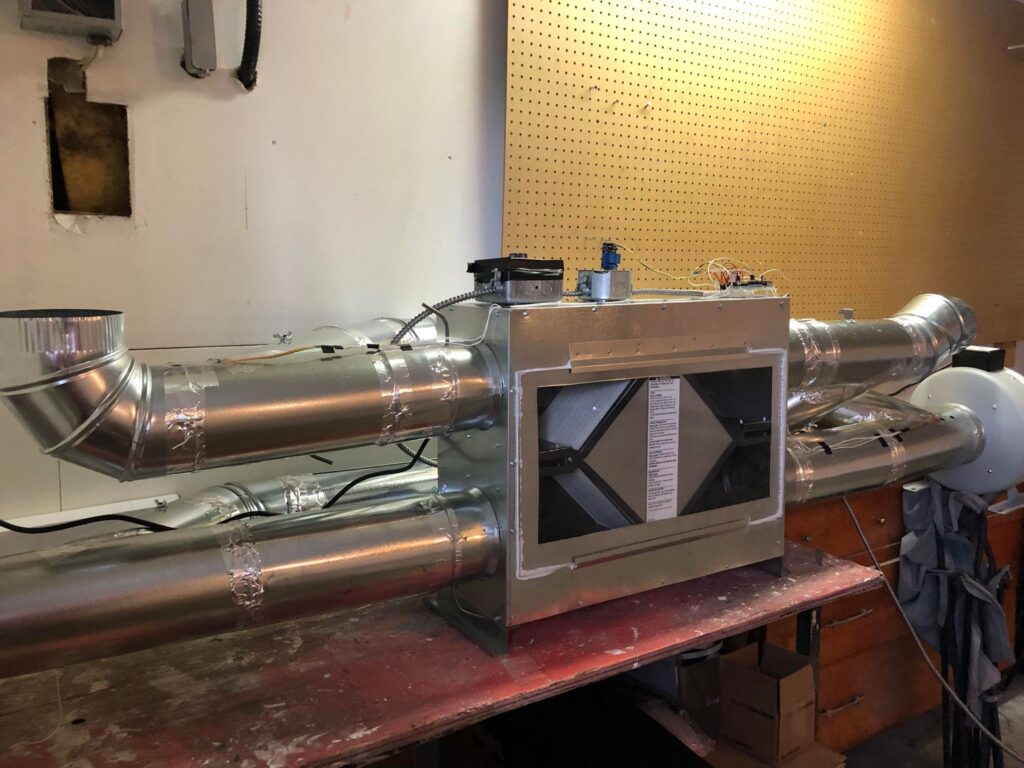
Join our presentation
About our project
Energy Recover Ventilators (ERVs) are designed to work with HVAC systems to draw fresh air into buildings and remove stale air while retaining heat in the building. This process allows for better air quality while reducing the load on your HVAC system and extending its lifespan. The focus of this project in particular was to design, optimize and build a prototype ERV to reduce the energy, cost, and GHG emissions associated with ventilating and humidifying a 3 bedroom Calgary condo.
To achieve this, the team determined the best technology for sensible and latent heat recovery, designed a ventilator to incorporate this technology, then built a prototype that included automated Arduino controls, all over the span of 8 months. The team proffered an innovative solution to the problem of energy savings by implementing a unique feature known as a ductwork economizer allowing us to take advantage of times of the year where the ERV was not required.
Meet our team members

(maxim.klopunov@ucalgary.ca)
Maxim is a fifth year mechanical engineering student with a minor in Mechatronics. He contributed considerably to the control systems design as well as assisting with various engineering calculations for the fans and other components.

(talha.rabbani1@ucalgary.ca)
Talha is a fifth year mechanical engineering student with a minor in manufacturing. He took responsibility for the fans and psychometrics calculations in addition to media creation for the project.

(alshibli.hisham@ucalgary.ca)
Hisham is a fifth year mechanical engineering student with experience working in the oil and gas industry. He was responsible for the casing design, including the CAD model and material selection. He also assisted in providing a physical workspace.

(adriel.chan@ucalgary.ca)
Adriel is a fifth year mechanical engineering student with a minor in manufacturing. He used his experience from his internship in the HVAC industry to assist with fabrication, materials sourcing, and heat transfer calculations.

(kyron.evans@ucalgary.ca)
Kyron is a fifth year mechanical engineering student. He is the team lead and used his background in the HVAC industry as a Sheetmetal worker apprentice to lead the mechanical design, project management, and fabrication process.

(safwan.hossain@ucalgary.ca)
Safwan is a fifth year mechanical engineering student with a minor in mechatronics. He has experience working with control systems and was responsible for automating the system in addition to assisting with the electronics design.
Details about our design
HOW OUR DESIGN ADDRESSES PRACTICAL ISSUES
The motivation behind this prototype is to optimize efficiency as buildings in developed countries account for 30%-40% of all energy consumption. As the world is constantly evolving towards cleaner and more efficient uses of energy, this is an effective first step by starting with buildings that require a significant amount of energy. With ventilation being a necessity in the modern world, they need systems and units to be highly efficient as they are used everywhere. This ERV is intended to reduce annual energy consumption and optimize for max energy and cost savings. This achieve through the unique automated bypass system built directly into the unit.
Newer buildings – commercial or office buildings, in particular – are often equipped with units that supply heating, ventilation, and air conditioning, otherwise known as HVAC units, that control temperature and, to a certain extent, humidity to accommodate the thermal and moisture comfort of its occupants. Considering residential households in the older Northwest of Calgary, a significant portion of homes are equipped with only furnace humidifiers with no other supplemental ventilation systems. ERV allows better air quality by the delivery of fresh air directly into your home, while recovering 60% – 70% of the energy of your outgoing air.
Ultimately, this ERV system would be tied into the furnace duct system such that it exhausts a portion of return air out of the house while supplying the same return air trunk with fresh pre-conditioned air closer to the furnace. This will decrease the thermal load that the furnace would typically need to overcome by pulling in unconditioned fresh air.
WHAT MAKES OUR DESIGN INNOVATIVE
This prototype features a unique duct system called an economizer, and it ensures the unit is bypassed when it will not serve its function. A prime opportunity for the use of this system is during the shoulder seasons of Spring and Fall, when the outdoor air temperature is relatively close to that of the indoor air. As such, there won’t be much of a temperature differential between the air streams for the heat to transfer across and so there’s no use running it through the system. The system will be closed off and the air will be passed through ducts around the unit which will require less pressure, and thus, less energy. This will also keep the unit cleaner as it is not needlessly having air and debris run through it. This bypass system is completely automated, and an Arduino control system determines when the conditions are met for the system to be closed off.
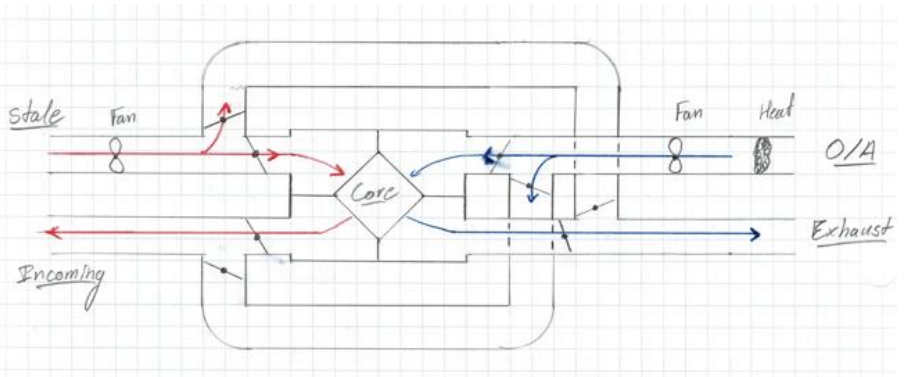
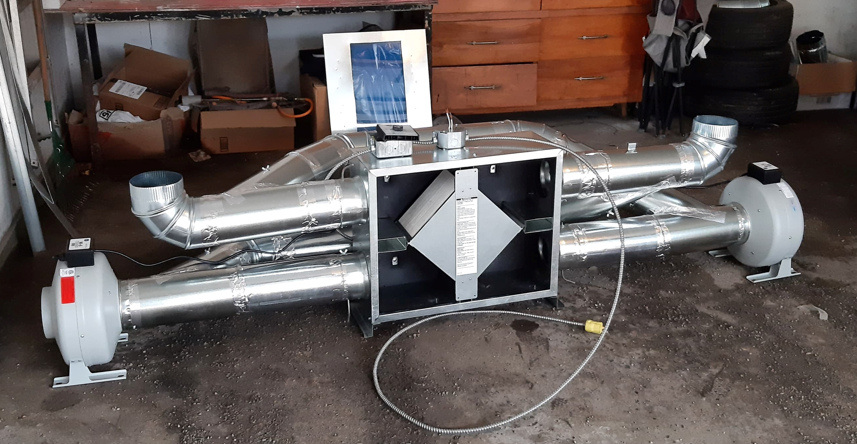
WHAT MAKES OUR DESIGN SOLUTION EFFECTIVE
- Our prototype incorporates the use of heater, meaning it can theoretically run 24/7. whereas other EV series cores start to freeze up in below-freezing conditions, equating to 888 annual hours without forced ventilation.
- Our prototype is capable of supplying ventilation to a much wider variety of housing setups due to its rheostat fan adjustment.
- Our prototype at 200CFM consumes less power annually than the EV300 running at 300 CFM due to the bypass system and reduced power consumption. Because of this, it contributes to lesser electrical annual costs than the EV300 and allows it to do the same job with greater efficiency throughout the year.
HOW WE VALIDATED OUR DESIGN SOLUTION
The design solution was validated by comparing the annual power consumption of the prototype to that of the rest of the industry standard RenewAire EV series. To do this, voltage and amperage readings were measured from the unit while it was running to determine watt-hours. Then, the watt-hours were extrapolated to determine energy usage throughout the entire year. Because of the bypass system, the unit would be consuming considerably less energy on certain days depending on weather conditions. To determine which days the system would be running and factor this into the calculations, Excel was used with conditional statements based on 2021 weather data. Using Excel, the team determined when a heater would be necessary and factored this into the annual power consumption. In addition, the automated controls were tested in different scenarios to confirm that the bypass system would engage in the correct weather conditions.
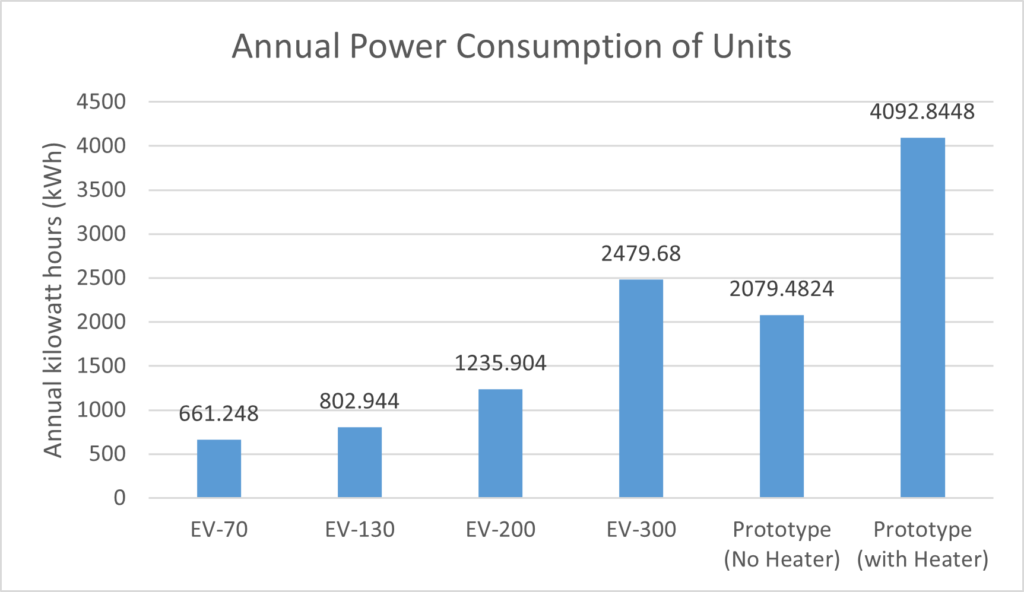
FEASIBILITY OF OUR DESIGN SOLUTION
This project relies heavily on the engineering design parameters and optimization of the prototype revolves around the specific building application and outdoor climate conditions. Regarding building application, the square footage and number of residents are the most important design variables. It is also key to consider the available power. Extensive effort was put into all aspects of design, research, and materials selection. This design was determined optimal to supply for a 3000 sq. ft. house containing 4 people. The available voltage is 120-220V while the available amperage is around 15A. The unit comes to a cost of $333.81 CAD which is below the predicted cost of $400.
Partners and mentors
This project was sponsored by ASHRAE SAC. We want to thank our industry advisors Mike Torjan, Malcolm Chorel, Zak Yousef, Dave Barrett, and Kyle Shummoogum for overseeing the design process and providing technical advice every step of the way. We would also like to thank Arpi’s and Universal Ventilation Ltd for their material contributions.
Our photo gallery
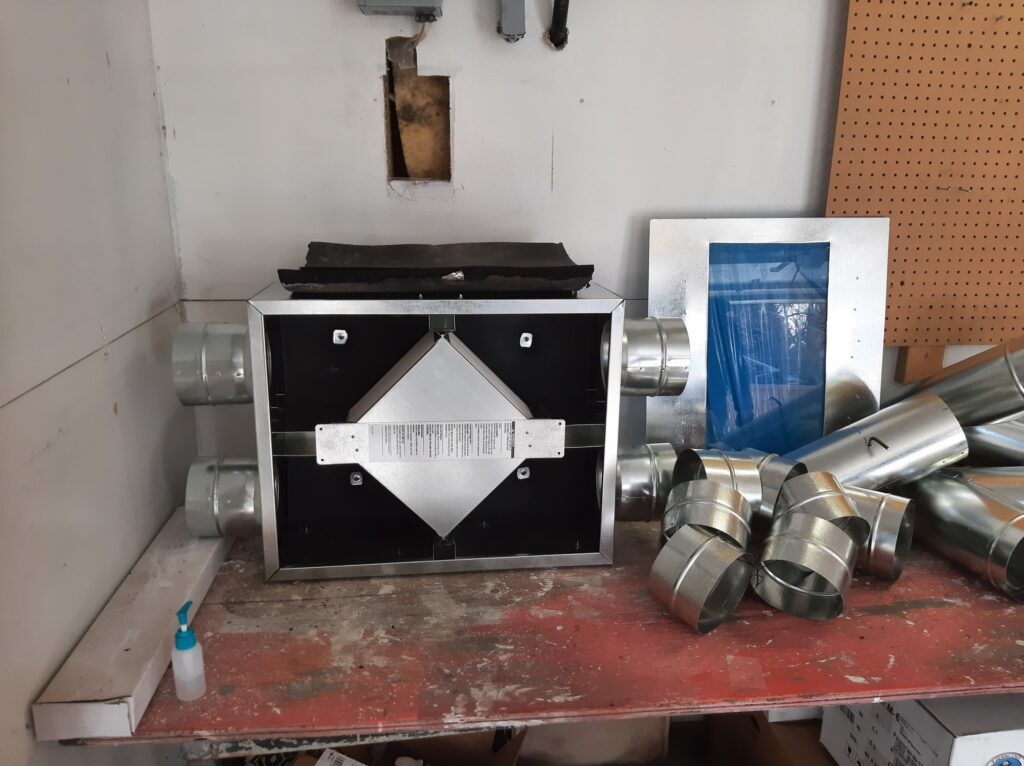
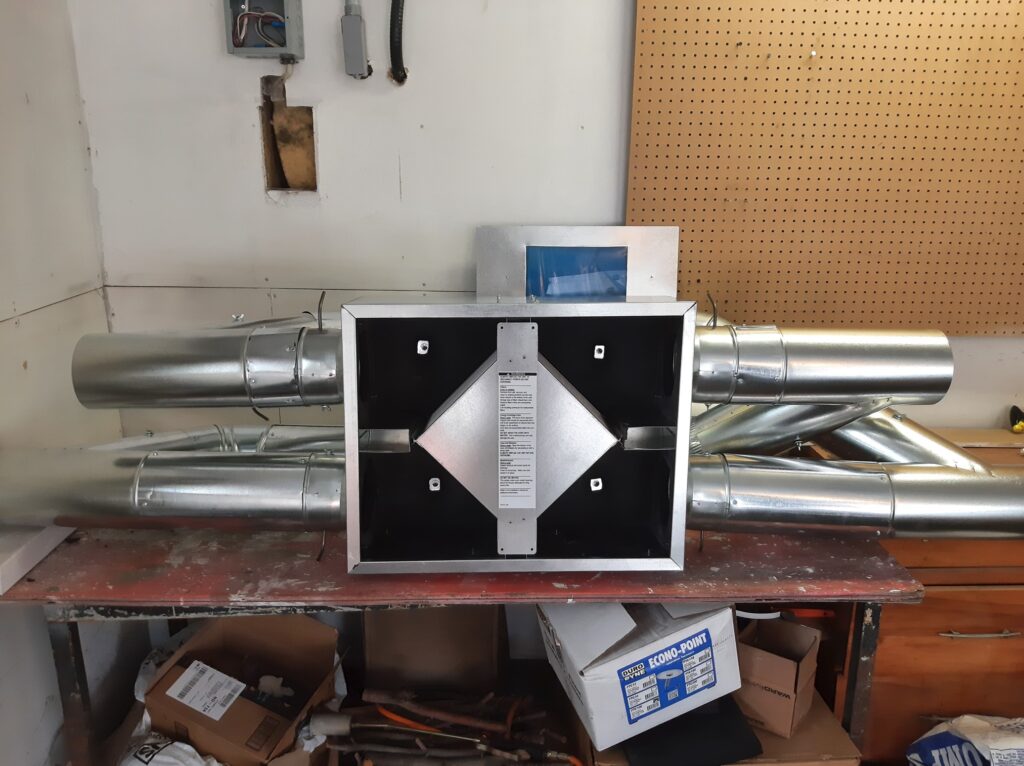
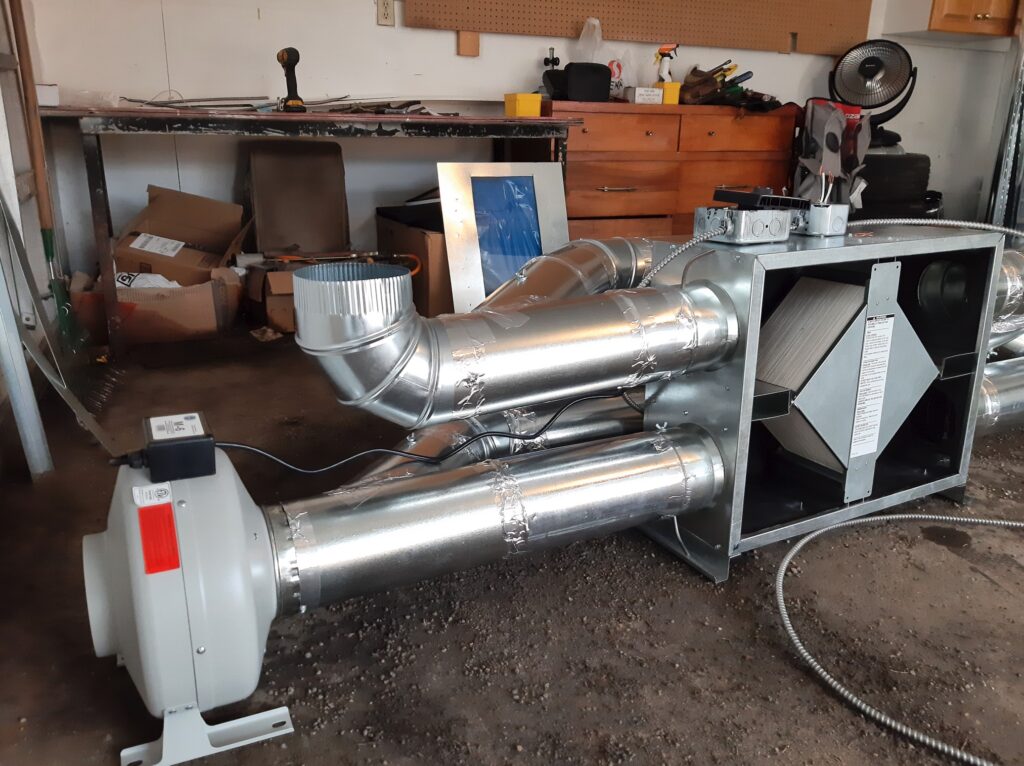

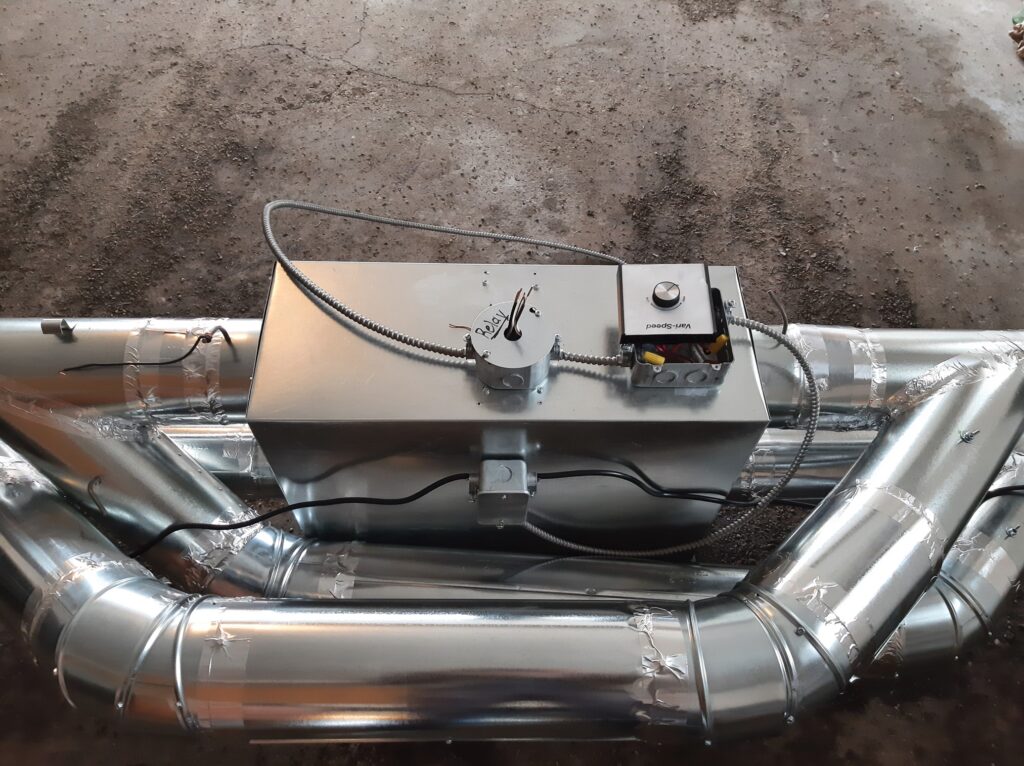
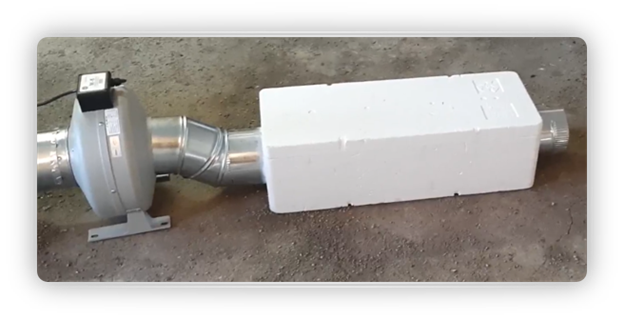
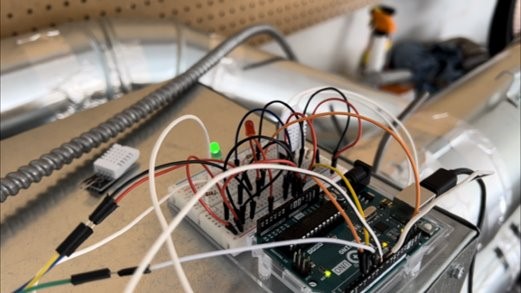
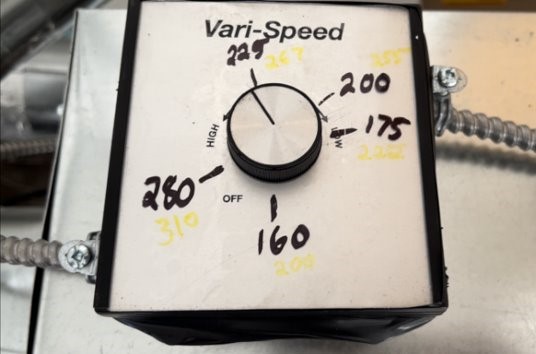
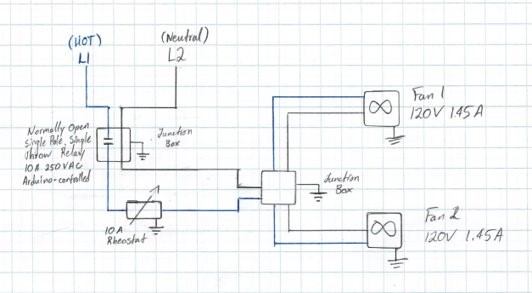
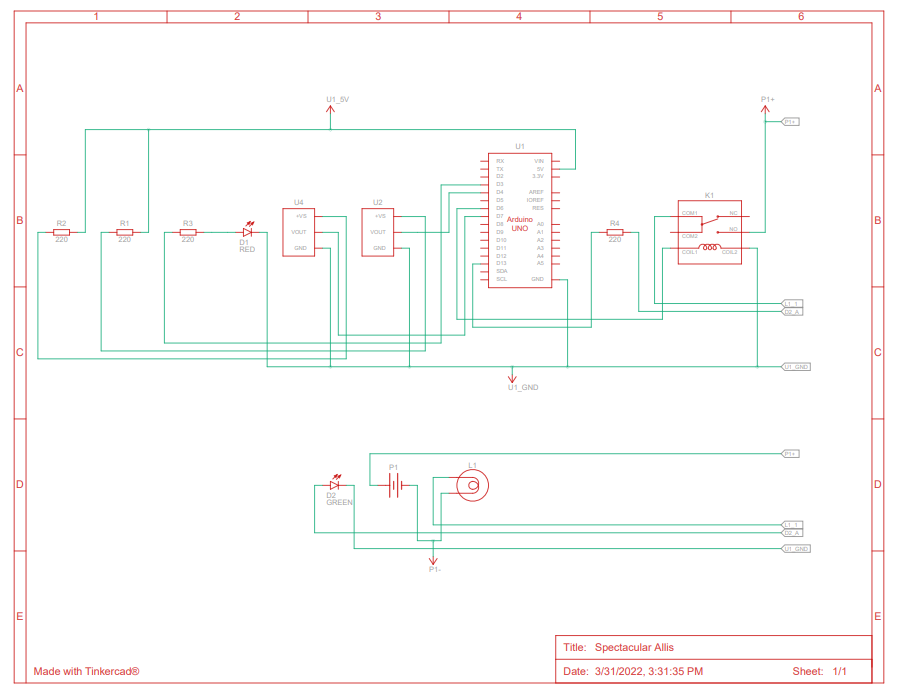
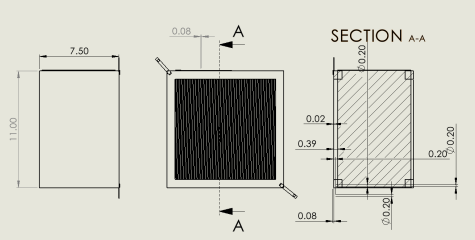

References
- D2l.ucalgary.ca, 2021. [Online]. Available: https://d2l.ucalgary.ca/d2l/le/content/405607/viewContent/4841435/View. [Accessed: 10- Dec- 2021].
- UltimateAir. (n.d.). What is an Erv? UltimateAir. Retrieved April 3, 2022, from https://www.ultimateair.com/air-filtration
